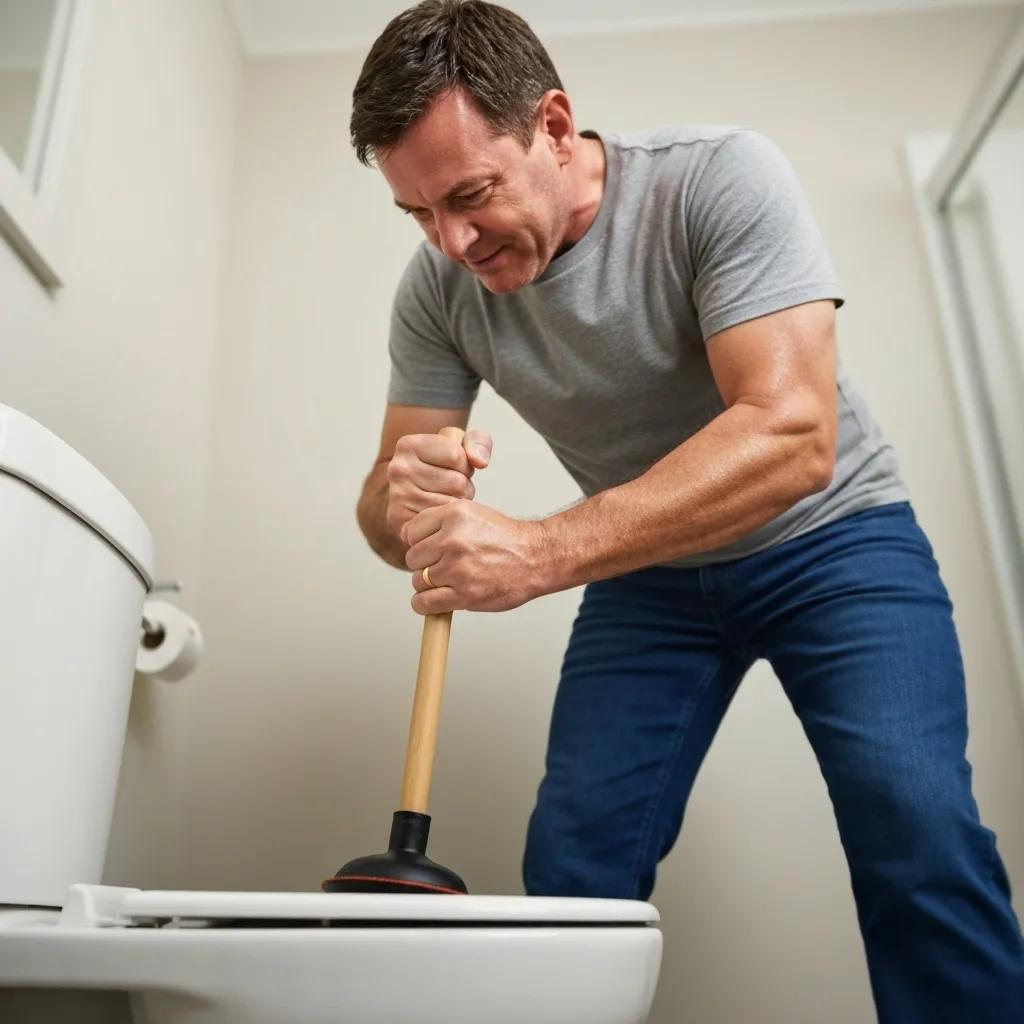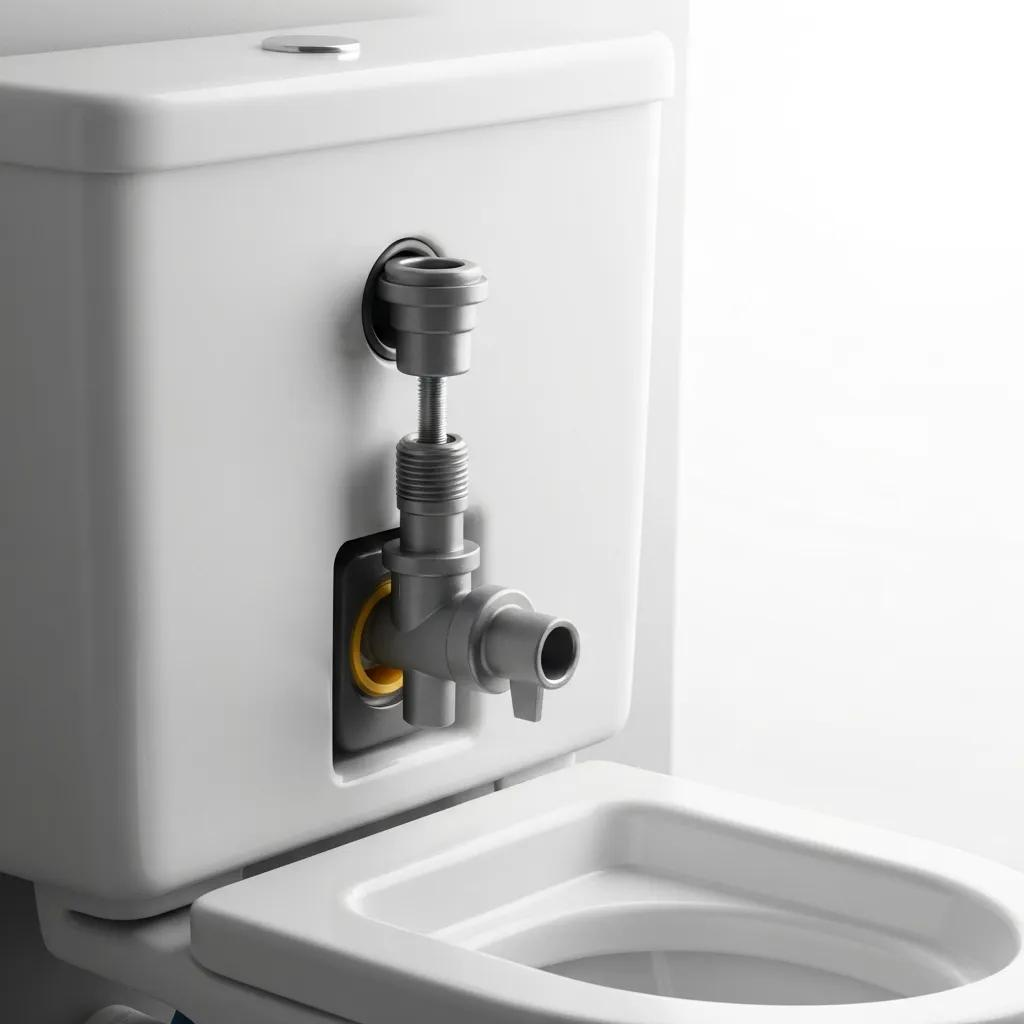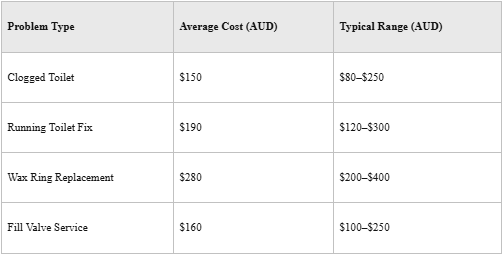
The 5 Most Common Toilet Problems and How to Fix Them
Toilet problems disrupt daily life, waste water, and inflate bills but many issues can be resolved quickly with the right approach or expert help. In this guide, you’ll discover the top five toilet problems Sydney homeowners face, learn when DIY fixes suffice and when to call Mitchel Plumbing and Gas, and gain clear instructions on clogs, running toilets, leaks, flushing failures, noisy fixtures, cost expectations, and preventative maintenance. By exploring causes, solutions, and professional insights, you’ll regain control of your bathroom and protect your home from damage.
What Are the Most Common Toilet Problems Sydney Homeowners Face?
A common toilet problem arises when a fixture fails to drain, seal, or flush properly, causing inconvenience, water waste, and potential property damage. For example, a running toilet can add hundreds of litres of water to your monthly bill. Sydney homes typically encounter five primary issues:
- Clogged toilets from debris or excessive paper
- Running toilets due to worn internal parts
- Leaky toilets at the base or tank connections
- Weak or incomplete flushes from handle or water-level faults
- Noisy toilets that gurgle, whistle, or hiss
Each of these problems demands specific troubleshooting steps and, in complex cases, professional intervention. Topics we’ll explore in depth below, beginning with DIY versus expert repairs.
Which Toilet Issues Require Professional Plumbing Services?
Some toilet malfunctions are best handled by a qualified plumber to prevent further damage or recurring faults. Professional services become necessary when:
- Clogs resist plunging and suggest deeper pipe blockages
- Persistent leaks compromise floors or walls
- Replacement of wax rings, fill valves, or flush mechanisms is needed
- Water pressure anomalies or venting faults cause gurgles and backups
- Emergency response is required for overflowing or burst components
Identifying these triggers early guides you toward calling Mitchel Plumbing and Gas for fast diagnosis and durable repair. Understanding urgency leads into how unresolved issues can impact your home’s expenses and structure.
How Do Toilet Problems Impact Water Bills and Home Damage?
Unaddressed toilet faults can significantly raise utility bills and cause property damage through continuous water flow or hidden leaks. A running toilet can waste up to 200 litres per day, while a base leak may rot subflooring and grout. For instance, even a small supply-line drip can soak timber joists over months, inviting mould growth. Recognising these consequences underscores the importance of prompt troubleshooting, as explained in the next section on unclogging toilets safely.
How Can You Fix a Clogged Toilet? Effective Solutions and When to Call a Plumber

A clogged toilet occurs when water and waste cannot pass through the bowl into the drain line, often due to blockages in the trap or nearby piping. This obstruction not only halts flushing but risks overflow and unsanitary conditions. For DIY relief, use common tools, and reserve professional drain clearing for severe backups.
What Causes Toilet Clogs and How Can You Identify Them?
Clogs form from excess toilet paper, foreign objects, or mineral build-up in older plumbing. You can identify a blockage when:
- Water rises high in the bowl without draining
- Flush lever feels sluggish or the water gurgles loudly
- Secondary drains (sinks, showers) back up simultaneously
- Persistent odours near the base, indicating trapped waste
These signs help you decide whether a plunger or auger can restore flow or if expert snaking from Mitchel Plumbing and Gas is required.
How to Unclog a Toilet Using a Plunger or Toilet Auger: Step-by-Step Guide
Before calling a plumber, you can often clear minor clogs with basic tools following these steps:
- Position a flange plunger to create a tight seal around the drain opening.
- Push and pull the plunger with firm, consistent strokes for 15–20 seconds.
- If plunging fails, insert a toilet auger into the bowl until resistance is felt.
- Crank the auger handle to break up the blockage, then carefully retract debris.
- Flush the toilet to confirm successful clearing; repeat if necessary.
Mastering these methods saves time and cost when stoppages are simple. If the obstruction resists both tools, professional drain clearing ensures safe removal.
When Is Professional Drain Clearing Necessary for a Clogged Toilet?
You should engage Mitchel Plumbing and Gas for drain clearing when:
- Multiple plunging attempts have no effect
- Water backs up into other fixtures
- You suspect tree root intrusion or collapsed pipes
- Chemical cleaners have failed to dissolve the blockage
- Recurring clogs indicate a deeper sewer issue
Timely professional intervention prevents damage to your drain system and restores reliable toilet operation.
How Do You Stop a Running Toilet? Troubleshooting and Repair Tips

A running toilet wastes water and stresses your household budget, but addressing it promptly can cut waste and lower bills. In most cases, a simple parts adjustment or replacement restores proper flushing cycles.
What Are the Key Components Causing a Running Toilet?
- Toilet flapper: seals the flush valve opening
- Fill valve: controls incoming water refill rate
- Float: regulates water shut-off height
- Overflow tube: directs excess water into the bowl
Each component can wear or misalign, so inspecting these parts is the first troubleshooting step before replacement.
How to Adjust or Replace a Faulty Flapper to Fix Running Toilets
To repair a leaking flapper:
- Turn off the toilet’s water supply and flush to empty the tank.
- Inspect the flapper for warping, mineral deposits, or misalignment.
- Clean the valve seat with a non-abrasive cloth to remove build-up.
- If damaged, detach the old flapper and install a compatible replacement.
- Reconnect, restore water supply, and test flush cycles so no water should run afterward.
Replacing this single rubber seal often stops phantom flushing and conserves water immediately.
When Should You Call Mitchel Plumbing for Running Toilet Repairs?
Engage our expert team when:
- Flapper replacements fail to stop leakage
- Fill valve adjustments don’t regulate water level
- Corroded or inaccessible components require specialised tools
- You prefer a guaranteed fix with high-quality parts and workmanship
- Water conservation upgrades (dual-flush or low-flow valves) are desired
Our emergency and scheduled services ensure a lasting repair that aligns with Australian plumbing standards.
What Causes a Leaky Toilet and How Can You Repair It?
A leaky toilet can emerge at the base, tank gasket, or supply line and, if untreated, leads to water damage and mould. Identifying leak locations and performing targeted repairs preserves structural integrity and avoids costly restoration.
How to Identify Toilet Leaks at the Base, Tank, and Supply Line
- Base leaks: failed wax ring or loose mounting bolts
- Tank leaks: cracked tank or worn tank-to-bowl gasket
- Supply line leaks: corroded hose or loose compression fittings
Observing water pooling around the fixture and testing each connection pinpoints the fault for repair.
What Are the Steps to Replace a Damaged Wax Ring?
Replacing a wax ring seal requires:
- Shutting off water, draining the tank and bowl completely.
- Unbolting the toilet from the floor and lifting it clear of the flange.
- Removing the old wax ring and cleaning the flange surface.
- Placing a new wax ring properly centred on the flange.
- Re-seating the toilet, tightening bolts evenly, and reconnecting water.
This process restores a watertight seal at the base and prevents subfloor saturation.
How Can Early Leak Detection Prevent Water Damage?
Detecting leaks early through routine inspections saves thousands in repairs because minor drips seldom cause visible harm at first but escalate into rot and mould behind walls and under tiles. Next we’ll look at flush failures, another common symptom of toilet distress.
Why Is My Toilet Not Flushing Properly? Common Causes and Fixes
A toilet that won’t flush or flushes weakly hinders hygiene and indicates mechanical or water-flow issues. Diagnosing flush failures quickly restores proper operation and avoids repeat troubles.
How to Fix a Loose or Broken Flush Handle and Chain
- Tighten or replace the handle nut inside the tank.
- Adjust chain length so there's slight slack when the flapper sits closed.
- Test the handle to ensure the flapper lifts smoothly and reseats fully.
Proper alignment between handle, chain, and flapper restores a full flush volume.
What Causes Low Water Levels in the Toilet Tank and How to Adjust Them?
Insufficient tank water prevents strong flushes. To correct:
- Locate the float mechanism and turn the adjustment screw to raise the water cutoff point.
- For a cup-style fill valve, pinch the clip and slide the float upward.
- Flush and measure water level against the manufacturer’s mark, ideal height is typically 20–25 mm below the overflow tube.
Accurate water-level settings ensure each flush delivers maximum force.
When Is Professional Help Needed for Weak or No Flush Toilets?
- Fill valves malfunction or won’t refill the tank adequately
- Obstructions in the trapway reduce flush pressure
- Older toilets require internal rebuild kits or full replacement
- Multiple adjustments fail to restore reliable performance
Expert service guarantees a swift, code-compliant resolution.
What Are the Causes of Noisy Toilets and How Can You Silence Them?
Noisy toilets from gurgles to whistles signal venting issues or faulty fill valves. Silencing your fixture enhances comfort and indicates correct airflow and water regulation.
Why Does My Toilet Gurgle or Bubble When Flushed?
Gurgling or bubbling often stems from blocked or undersized vent pipes that fail to equalise pressure in the drain line. When air cannot escape through roof vents, it bubbles back into the fixture. Clearing vent obstructions or adding auxiliary venting resolves these sound disturbances and restores proper drainage breathing.
How to Fix Whistling or Hissing Sounds from the Fill Valve
- Shut off water and flush to empty the tank.
- Remove the fill valve cap and inspect for debris.
- Clean or replace the valve diaphragm assembly if mineral build-up is present.
- Reassemble, adjust water pressure via the supply valve, and test for silent refill.
Proper maintenance of fill-valve components eliminates unwanted fill sounds.
How Much Does Toilet Repair Cost in Sydney? Understanding Pricing and Value
Toilet repair costs vary by problem complexity, parts required, and urgency. Transparent pricing helps you budget and recognise the value of professional repairs that prevent repeat calls and water waste.
What Are the Average Repair Costs for Common Toilet Problems?

Which Factors Affect Toilet Repair Prices?
Several elements influence final costs:
- Quality and complexity of replacement parts
- Time of service (after-hours or weekend emergencies)
- Accessibility of the fixture and property layout
- Extent of damage or corrosion discovered during inspection
- Water-efficiency upgrades requested
Understanding these factors clarifies budget expectations and service value.
Why Is Investing in Professional Toilet Repair Worth It?
Professional repairs by Mitchel Plumbing and Gas deliver durable solutions, high-quality parts, and compliance with Australian plumbing codes. Expert diagnosis prevents recurring faults, conserves water through precise seals, and safeguards your home against structural damage making professional service a cost-effective long-term investment.
How Can You Maintain Your Toilet to Prevent Common Problems? Essential Maintenance Tips
Routine maintenance ensures reliable performance, water conservation, and early fault detection. Simple checks and timely service appointments minimise emergencies and extend fixture life.
What Regular Checks Should You Perform on Toilet Components?
Incorporate these inspections into your home maintenance routine:
- Verify flapper condition and chain alignment every 3–6 months
- Observe water level in the tank and adjust float as needed
- Inspect supply lines and shut-off valve for leaks or corrosion
- Check mounting bolts and base seal for signs of dampness
Regular attention forestalls clogs, leaks, and running issues before they escalate.
How Does Water Conservation Tie into Toilet Maintenance?
Maintaining efficient fill valves and flappers prevents unnecessary water flow. Upgrading to dual-flush or low-flow mechanisms can save thousands of litres annually, lowering bills and environmental impact. Timely repairs ensure your toilet operates at peak efficiency, aligning with sustainable plumbing practices.
When Should You Schedule Professional Toilet Maintenance with Mitchel Plumbing?
Plan a professional service when:
- You notice recurring minor leaks or noises
- Your property is older than 10 years without recent updates
- You’re installing water-saving fixtures or smart leak detectors
- Preventative maintenance packages include annual inspections
- You prefer comprehensive checks by licensed plumbers rather than DIY audits
Seasonal maintenance secures ongoing reliability and peace of mind.
Mitchel Plumbing and Gas combines local expertise, premium parts, and commitment to water conservation, ensuring your toilet remains efficient and problem-free. For professional diagnosis, timely repairs, or routine maintenance, contact our Sydney team to protect your home and wallet from preventable plumbing issues.
Recent Post

What to know about Toilets?
Your toilet is probably the hardest-working fixture in your home, yet most of us don't think about it until something goes wrong. Whether you're dealing with a constantly running toilet, trying to choose between a one-piece or two-piece model, or wondering if that smart toilet is worth the investment, this comprehensive guide has you covered.

10 Most Common Hot Water Heater Noises
Hot water heater making noise? Identify common sounds like popping, banging, and hissing to know when you need professional repair services.

DOES FLUSHING THE TOILET COST MONEY?
A single flush costs just a fraction of a cent, so unless you're someone that makes a habit out of flushing the toilet on repeat, then there won't be much of an impact on your water bill.






.svg)